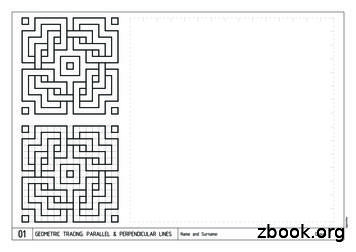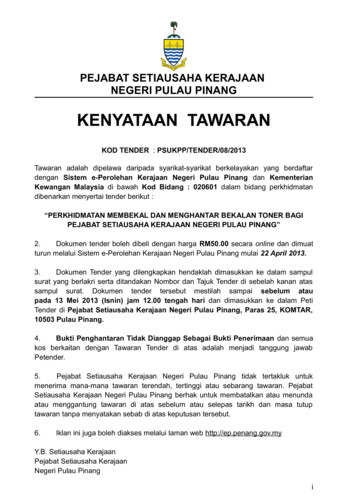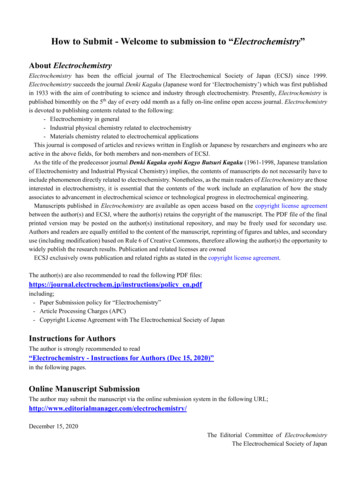Unit 10 Angle Relationships
CCM6 7 Unit 10 Angle Relationships Page 1CCM6 7 2015-16Unit 10 Angle RelationshipsNameTeacherProjected Test DateMain ConceptsUnit 10 VocabularyMeasuring Angles with ProtractorsClassifying Angles (Acute, Right, Obtuse, Straight, Reflex)Angle Relationships (2 or more angles): Complementary,Supplementary, Vertical, and AdjacentParallel Lines with TransversalsSides of Triangles and Classify TrianglesTriangle Sum TheoremExterior Angle TheoremMixed Angle PracticeStudy 48-5253-55
CCM6 7 Unit 10 Angle Relationships Page 2CCM6 Plus/7 Plus – Unit 10: Angle Relationships and Geometric PropertiesVocabularyAcute AngleAn angle that measures less than 90 degreesAcute TriangleAdjacent AnglesA triangle whose angles are all less than 90⁰Angles that share a vertex and a side but no points in their interiorsAlternate ExteriorAnglesAlternate InteriorAnglesPairs of angles found on the exterior of two lines and on opposite sidesof the transversalPairs of angles found on the interior of two lines and on opposite sides ofthe transversalAngleTwo rays meet at an endpointAngle Sum TheoremThe sum of the interior angles of any triangle is equal to 180 Angle Angle CriterionIf two angles of one triangle are congruent to two angles of anothertriangle, then the triangles are similarComplementaryAnglesTwo angles whose sum is 90 degreesCongruent AnglesAngles that have the same measureCongruent TrianglesCorrespondingTriangles whose corresponding sides are congruent and correspondingangles are congruent - these triangles are the same shape and sizeSimilar in character, form or functionCorresponding AnglesA pair of angles formed by a transversal and two linesDeductive ReasoningTo arrive at a conclusion using facts, definitions, rule or propertiesEquilateral TriangleExterior AngleA triangle with three congruent sidesAn angle formed by a side and the extension of an adjacent sideIntersectingA single point where two lines meet or crossInterior AngleAn angle inside a polygonIsosceles TriangleA triangle with at least two congruent sidesLine SegmentA straight line with exactly two endpointsNon-adjacent AnglesObtuse AngleTwo angles that do not have a common side or a common vertex (nottouching)An angle that measures more than 90 degrees but less than 180Obtuse TriangleA triangle with one obtuse angle2
CCM6 7 Unit 10 Angle Relationships Page 3ParallelParallel linesSide by side lines, surfaces, or objects having the same continuousdistance apartLines that lie in the same plane but never intersectPerpendicularProtractorIntersecting to form right anglesAn instrument used to measure angles in degreesRayA part of a line with exactly one endpointRemote Interior Angles The remote interior angles are the two angles that are inside the triangleand opposite from the exterior angleRight AngleAn angle that measures exactly 90 Right TriangleSame Side InteriorAnglesScalene TriangleA triangle with one right angleLie on the same side of the transversal between the other two linesStraight AngleSupplementary AnglesTransversalTriangleTriangle ExteriorAngle TheoremTriangle Sum TheoremVertical AnglesAn angle that measures exactly 180 Two angles whose sum is 180 degreesA line that cuts through two or more parallel linesA closed figure consisting of three line segmentsThe measure of each exterior angle of a triangle equals the sum of themeasures of its two remote interior anglesThe three angles of any triangle will always total 1800A pair of non-adjacent angles formed by the intersection of two straightlines; vertical angles are congruentA triangle with no congruent sides3
CCM6 7 Unit 10 Angle Relationships Page 4Acute AngleObtuse AngleStraight AngleRight AngleReflex AngleAcute TriangleObtuse TriangleRight l AnglesTriangle4
CCM6 7 Unit 10 Angle Relationships Page 5ProtractorCompass(in alTriangleRay5
CCM6 7 Unit 10 Angle Relationships Page 6AngleLineLine SegmentVertexAdjacentAngles6
CCM6 7 Unit 10 Angle Relationships Page 7Measuring AnglesWrite the measure of each given angle below.1. Measure 2. Measure 3. Measure 4. Measure 5. Measure 6. Measure On a separate page, using a protractor, draw the following angles and label them with the givenletter as the vertex.A) 1250B) 300C) 1650D) a right angle7
CCM6 7 Unit 10 Angle Relationships Page 8Drawing the angles from the bottom of page 6:8
CCM6 7 Unit 10 Angle Relationships Page 9Find the measure of each angle in degrees.DCEBFAm CAB m DAB m EAB m CAF m DAF m EAF STRQPm RPQ m SPQ m TPQ 9U
CCM6 7 Unit 10 Angle Relationships Page 10PRACTICE MEASURING ANGLESPart 1:Fill the blank with the appropriate vocabulary word.1. A(n) angle is an angle that measures less than 90 .2. A(n) angle is an angle that measures more than 90 .3. A(n) angle is an angle that measures exactly 90 .Part 2:For each angle, first write an estimate measurement, then the actual measurement, and lastidentify the type of angle.Estimated Measure:Actual Measure:Type of Angle:Estimated Measure:Actual Measure:Type of Angle:Estimated Measure:Actual Measure:Type of Angle:Estimated Measure:Actual Measure:Type of Angle:Estimated Measure:Actual Measure:10
CCM6 7 Unit 10 Angle Relationships Page 11Part 3:Using the figure below, name the set(s) of angles that are obtuse and the set(s) of angles thatare acute.6.OBTUSE ANGLES:1 2357468ACUTE ANGLES:Part 4: ReflectionBased on today’s vocabulary, what are some things you think that we will study? What are yourstrengths and weaknesses in this area? How might you plan to study the vocabulary piece ofthis unit?11
CCM6 7 Unit 10 Angle Relationships Page 12ANGLESComplementary Angles:Supplementary Angles:Vertical Angles:Adjacent Angles:Find the missing angles in the following examples. Make sure you tell the reason that you knoweach measure.m 1 120 12442because givenm 2 becausem 3 because3m 4 becauseIs there more than one way to solve this? Explain:Use what you know to find the angle measures on the following problem.m SAX is 1180 and the m MAX is 650MSFind the measure of SAMAX12
CCM6 7 Unit 10 Angle Relationships Page 13Find the missing measures of all angles below and label them on the drawing.m PMA 650 and m PAM 600Pm AMX AMm MAX XFind the missing measure below.700Find the missing measure below.45013
CCM6 7 Unit 10 Angle Relationships Page 14Challenge. Find the value of x in the diagram. Then find the measure ofeach angle.1.(5x) (3x) 2. m VUT 175om VUJ 17x – 3,m JUT 17x 8. Find x then find the measure of each angle.3.14
CCM6 7 Unit 10 Angle Relationships Page 15Find the missing angles in the following. Make sure you tell the reason that you know eachmeasure.m 1 135 1m 2 because2424because given3m 3 because135 m 4 becauseIs there more than one way to solve this? Explain:2. Use what you know to find the angle measures on the following problem.m SAX is 1000 and the m MAX is 700MSFind the measure of SAMAX3. Find the missing measures of all angles below and label them on the drawing.m AMX 300 and m PAG 1000PPAGAMXFind the missing measures below.4.5.60065015
CCM6 7 Unit 10 Angle Relationships Page 16Find the missing measure below.6.45014507.EAKA700ERD350CDBW8.16
CCM6 7 Unit 10 Angle Relationships Page 179.10.17
CCM6 7 Unit 10 Angle Relationships Page 1818
CCM6 7 Unit 10 Angle Relationships Page 1919
CCM6 7 Unit 10 Angle Relationships Page 20Concept Map: AnglesName:20
CCM6 7 Unit 10 Angle Relationships Page 21Building A BenchYou are building a bench to add to the flower garden at the local library. The seat ofthe bench will be parallel to the ground. The legs that you are creating will be twoboards crossed to make an x shape under the seat of the bench. The angle at the toppart of the x will need to be 1500 to safely support the bench seat and make it the rightheight. Draw a sketch below of the bench and then fill in all of the angle measures forthe 12 angles that are formed by the crossed boards that are supporting the benchseat. Include the angles created by the ground and the bottom of the supports.21
CCM6 7 Unit 10 Angle Relationships Page 22Angles Created from Parallel Lines cut by a Transversal LineA transversal is a line that intersects two or more lines (in the same plane). When linesintersect, angles are formed in several locations. Certain angles are given "names" thatdescribe "where" the angles are located in relation to the lines. These names describeangles whether the lines involved are parallel or not parallel.Remember that:- the word INTERIOR means BETWEEN the lines.- the word EXTERIOR means OUTSIDE the lines.- the word ALTERNATE means "alternating sides" of the transversal.When the lines are NOT parallel .When the lines are parallel.22
CCM6 7 Unit 10 Angle Relationships Page 23When the lines are parallel:Alternate Interior Angles(measures are equal)The name clearly describes "where"these angles are located.Look carefully at the diagram below:Hint: If you draw a Z on the diagram, the alternate interior anglesare found in the corners of the Z. The Z may also be a backward Z.Theorem:If two parallel lines are cut by a transversal, the alternate interior anglesare congruent.Theorem:If two lines are cut by a transversal and the alternate interior angles arecongruent, the lines are parallel.23
CCM6 7 Unit 10 Angle Relationships Page 24When the lines are parallel:Alternate Exterior Angles(measures are equal)The name clearly describes "where"these angles are located.Look carefully at the diagram below:Theorem:If two parallel lines are cut by a transversal, the alternate exterior anglesare congruent.Theorem:If two lines are cut by a transversal and the alternate exterior angles arecongruent, the lines are parallel.24
CCM6 7 Unit 10 Angle Relationships Page 25When the lines are parallel:Corresponding Angles(measures are equal)Unfortunately, the name of these anglesdoes not clearly indicate "where" theyare located. They are located:- on the SAME SIDE of the transversal- one INTERIOR and one EXTERIOR- and they are NOT adjacent (they don't touch).(They lie on the same side of the transversal,in corresponding positions.)Hint: If you took a picture of one corresponding angle and slidthe angle up (or down) the same side of the transversal, youwould arrive at the other corresponding angle.Also: If you draw an F on the diagram, the corresponding angles can befound in the "corners" of the F. The F may be backward and/or upside-down.DRAW CIRCLES to find CORRESPONDING ANGLES!Theorem:If two parallel lines are cut by a transversal, the corresponding angles arecongruent.Theorem:If two lines are cut by a transversal and the corresponding angles arecongruent, the lines are parallel.25
CCM6 7 Unit 10 Angle Relationships Page 26When the lines are parallel:Interior Angles on the SameSide of the Transversal(measures are supplementary)Their "name" is simply a description of where theangles are located.Theorem:If two parallel lines are cut by a transversal, the interior angles on thesame side of the transversal are supplementary.Theorem:If two lines are cut by a transversal and the interior angles on the sameside of the transversal are supplementary, the lines are parallel.26
CCM6 7 Unit 10 Angle Relationships Page 2727
CCM6 7 Unit 10 Angle Relationships Page 2828
CCM6 7 Unit 10 Angle Relationships Page 2929
CCM6 7 Unit 10 Angle Relationships Page 30Parallel LinesName the relationship as alternate interior, corresponding, or alternate exterior.Find the missing measures on all the angles below.1.3x 10n4x 3030
CCM6 7 Unit 10 Angle Relationships Page 312.10x 35x 183.3x – 104x – 254.7x 12x 1131
CCM6 7 Unit 10 Angle Relationships Page 3232
CCM6 7 Unit 10 Angle Relationships Page 3333
CCM6 7 Unit 10 Angle Relationships Page 3434
CCM6 7 Unit 10 Angle Relationships Page 35Classifying Triangles by Sides:Name each type and draw a picture of each.Classifying Triangles by Angles:Name each type and draw a picture of each.35
CCM6 7 Unit 10 Angle Relationships Page 36Using a ruler, measure each side of each triangle (in cm to nearest tenth).What do you notice about the relationship between the two shorter sides and thelongest side?Can you draw a triangle with sides of 2, 3, and 7? EXPLAIN:Can you draw a triangle with sides of 5, 5, and 12? EXPLAIN:Can you draw a triangle with sides of 5, 3, and 7? EXPLAIN:After your investigation, complete the following statement:In any triangle, the sum of the two sides will bethan the length of the longest side.36
CCM6 7 Unit 10 Angle Relationships Page 37Fill in the missing information for each triangle named.TRIANGLELength ofSide 1Length ofSide 2Length ofSide 3Sum of allSidesName ofTriangleby SidesTriangle MAD12 mmTriangle ZENTriangle POD12 mm15 mm5 mmEquilateral 9 mm28 mmTriangle CATTriangle CRY42 mm8 mm13 mm3760 mmEquilateral 29 mmIsosceles
CCM6 7 Unit 10 Angle Relationships Page 38Making Connections - Parallel Lines and the Triangle Sum TheoremHow can I show that the sum of the interior angles of a triangle is equal to 180 using what Iknow about the relationships between the angles of parallel lines cut by a transversal?Use the following figure to answer the questions that follow.1. Knowing that angle 1, angle B and angle 2 form a straight line, what is their sum?2. What kind of angles are angle C and angle 2? What is their relationship?3. What kind of angles are angle A and angle 1? What is their relationship?4. Based on your answers to questions 1 – 3, how do you know that the sum of the angle A,angle B, and angle C is 180 ?TRIANGLE SUM THEOREM:The sum of all 3 angles of a triangle ALWAYS EQUALS 180 .38
CCM6 7 Unit 10 Angle Relationships Page 3939
CCM6 7 Unit 10 Angle Relationships Page 4040
CCM6 7 Unit 10 Angle Relationships Page 4141
CCM6 7 Unit 10 Angle Relationships Page 4242
CCM6 7 Unit 10 Angle Relationships Page 4343
CCM6 7 Unit 10 Angle Relationships Page 4444
CCM6 7 Unit 10 Angle Relationships Page 4545
CCM6 7 Unit 10 Angle Relationships Page 46Find each missing angle measure.1.2. In a triangle the measure of two of theangles is 35 and 65 . Find the measure ofthe third angle.?40 45 3. In triangle DEF the measure of angle Dis 33 and the measure of angle E is 97 .Find the measure of angle F.4.34 ?111 5. Triangle ABC is a right triangle. Themeasure of angle A is 37 . Find themeasures of angle B and C.6. Four isosceles triangles cap the SmithTower in Seattle. If one of the base anglesmeasures 65 , what are the measures of theother two angles?7. Find the missing angle measure withoutusing a protractor. Triangle is not drawn toscale. Set up an equation and show yourwork.8. Draw a triangle and give it the followingmeasures then list the measure of all threeangles. m 1 1020, m 2 x 2, andm 3 x 20.880250x - 100m 1 m 2 m 3 9. Can you draw a right triangle that is also an isosceles triangle? Explain.10. Can a triangle have more than one obtuse angle? Explain.46
CCM6 7 Unit 10 Angle Relationships Page 47Tell if the following combinations are lengths that could create a triangle.11. 3, 5, 912. 8, 8, 813. 7, 8, 2How did you determine the answers to #11-13?14. In congruent triangles, what is true about corresponding sides?15. In congruent triangles, what is true about corresponding angles?47
CCM6 7 Unit 10 Angle Relationships Page 48Find the Missing Angle Practice48
CCM6 7 Unit 10 Angle Relationships Page 49Mark the diagram with the given information. Then, find the measure of the indicated angle.49
CCM6 7 Unit 10 Angle Relationships Page 5050
CCM6 7 Unit 10 Angle Relationships Page 5151
CCM6 7 Unit 10 Angle Relationships Page 5252
CCM6 7 Unit 10 Angle Relationships Page 53STUDY GUIDE53
CCM6 7 Unit 10 Angle Relationships Page 5454
CCM6 7 Unit 10 Angle Relationships Page 5555
CCM6 7 Unit 10 Angle Relationships Page 10 10 Part 1: Fill the blank with the appropriate vocabulary word. 1. A(n) _ angle is an angle that measures less than 90 .
Before measuring an angle, it is helpful to estimate the measure by using benchmarks, such as a right angle and a straight angle. For example, to estimate the measure of the blue angle below, compare it to a right angle and to a straight angle. 90 angle 180 angle A right angle has a measure of 90
An angle is said to be an obtuse angle if it is greater than 90 but is less than 120 . Straight Angle An angle whose measure is 180 is a straight angle. This angle got its name as it forms a straight line. AOB is a straight angle. Reflex Angle A reflex angle
Once the measure of an angle is known, the angle can be classified as one of three types of angles. These types are defined in relation to a right angle. Types of Angles A right angle m A 90 acute angle 0 m A 90 A obtuse angle 90 m A 180 A Angle Measure
Aug 18, 2015 · Measure and classify angles. Identify and use congruent angles and the bisector of an angle. Discover relationships between special pair of angles. Vocabulary Degree, ray, angle, sides, vertex, interior, exterior, right angle, acute angle, obtuse angle, angle bisector. Adjacent angles, linear pair angles, vertical ang
Vertical Angles: Two angles whose sides form two pairs of opposite rays. Acute Angle: An angle less than 90 degrees. Obtuse Angle: An angle greater than 90 degrees. Right Angle: An angle equal to 90 degrees. Straight Angle: An angle equal to 180 degrees. Midpoint: The point that divide
Geometry Unit 6: Right Triangles Ms. Talhami 13 Angle of Elevation vs. Angle of Depression a) the angle of elevation from the CAR to the top of the DINER is _. b) the angle of depression from the top of the TALL BUILDING to the DINER is _. c) the angle of elevation from the PLANE to the HELICOPTER is _. d) the angle
Prove few of the basic trigonometric identities. BACKGROUND: Reference Angle: For any given angle, its reference angle is the corresponding acute version of that angle. The reference angle is the smallest angle between the terminal side and the X-axis. Figure 1 shows the concept of a reference angle.
2.-Taking P dot on r as the vertex, indicate the resulting angle for the angle subtraction: A - B. 3.-Taking P dot on r as the vertex, indicate the resulting angle for the following operation: A B - C. 4.-Draw the angle bisector of the given angle. 1.-Taking P dot on r as the vertex, indicate the resulting angle for the angle addition: A B. P r A B A B C A B























